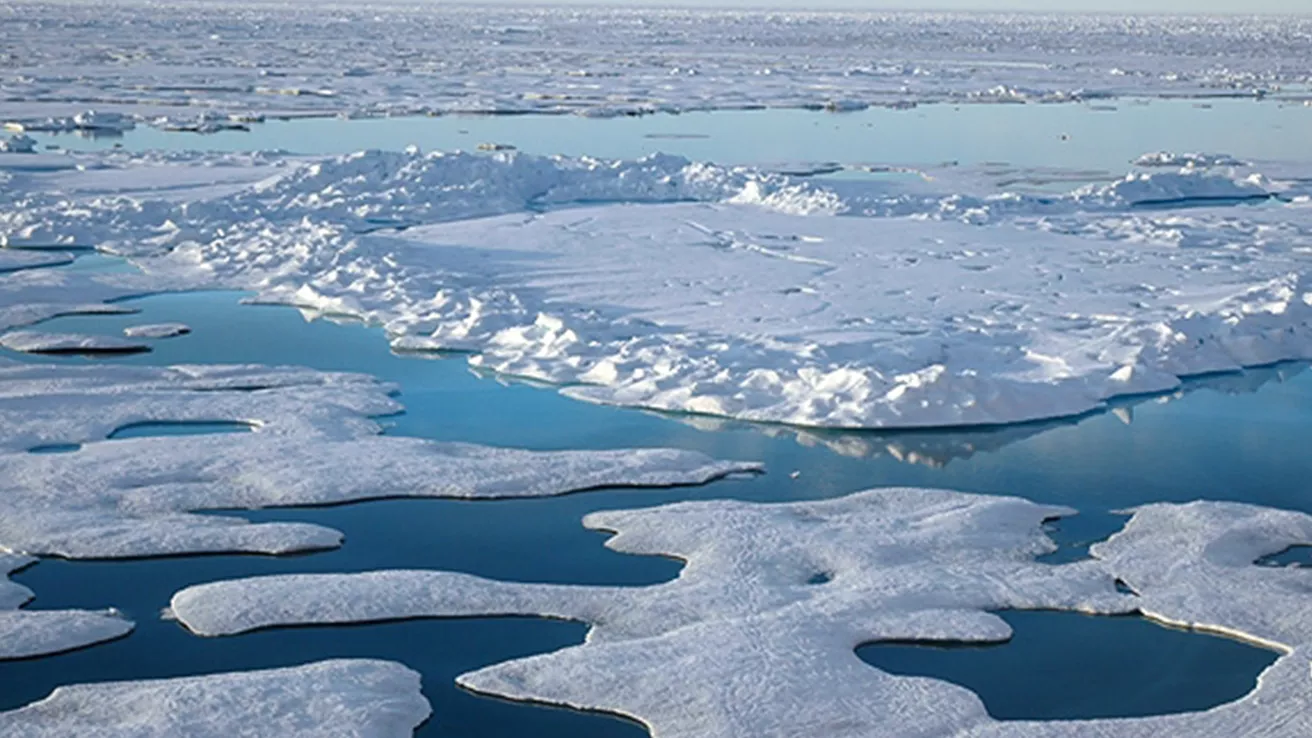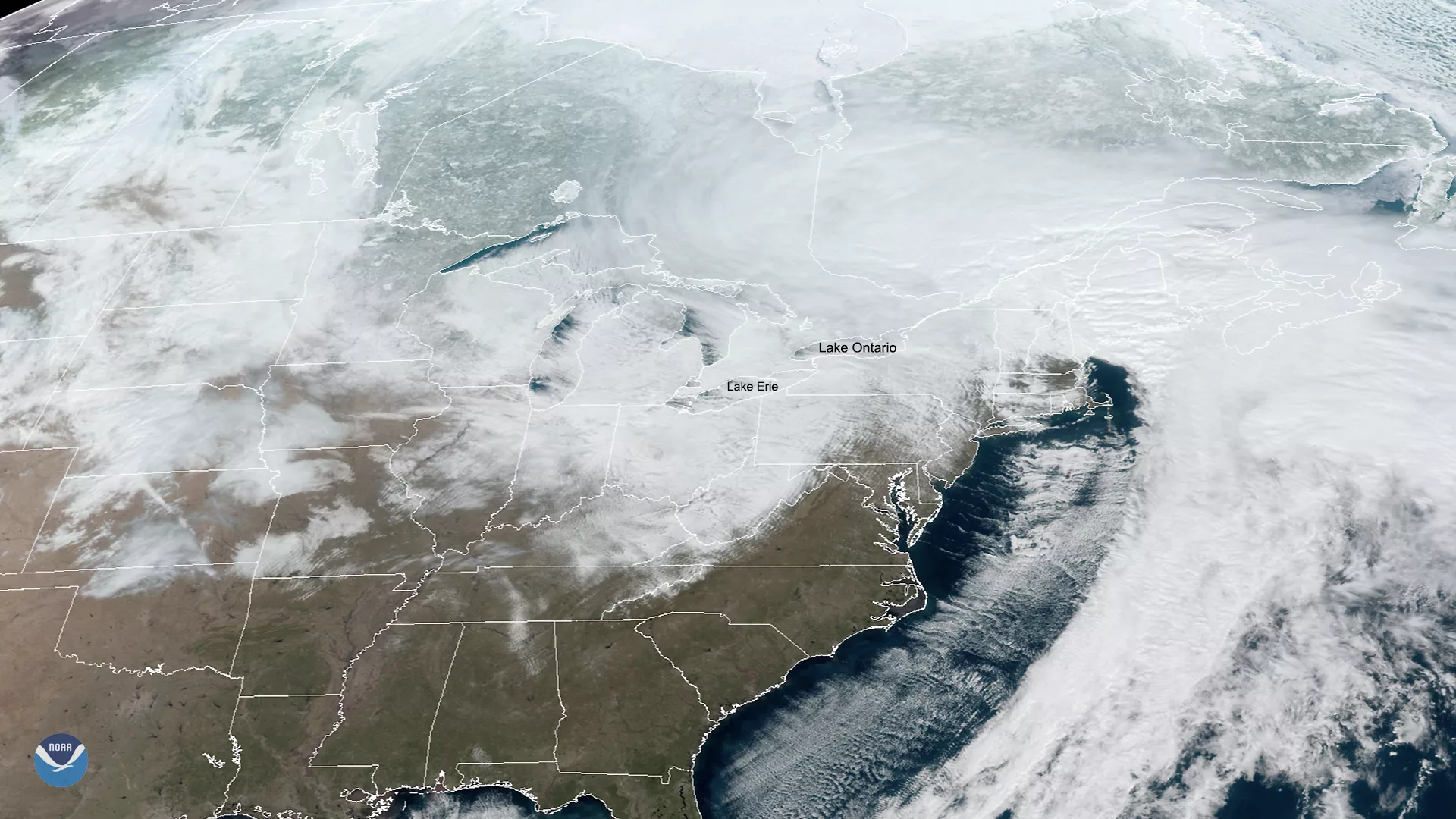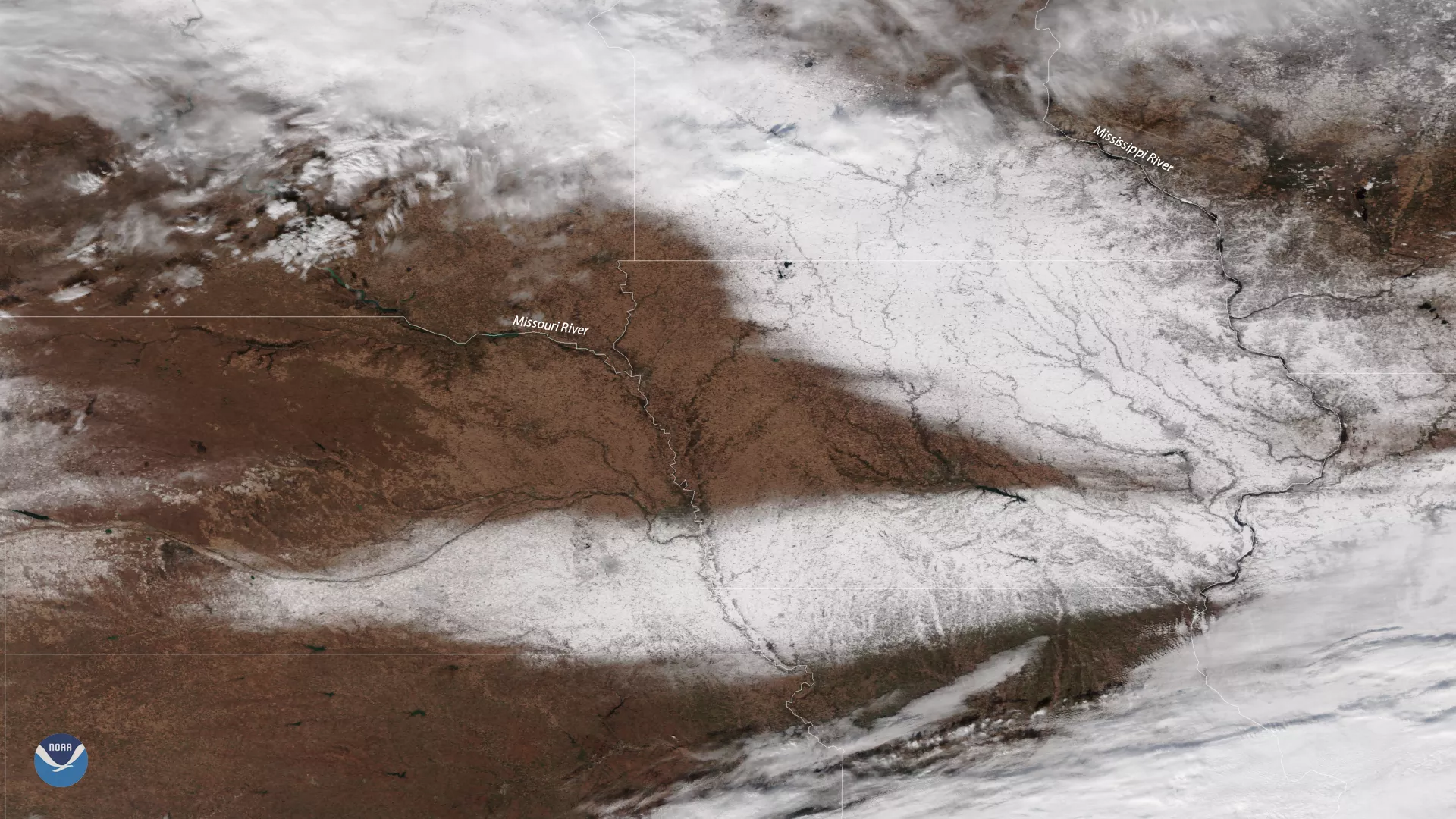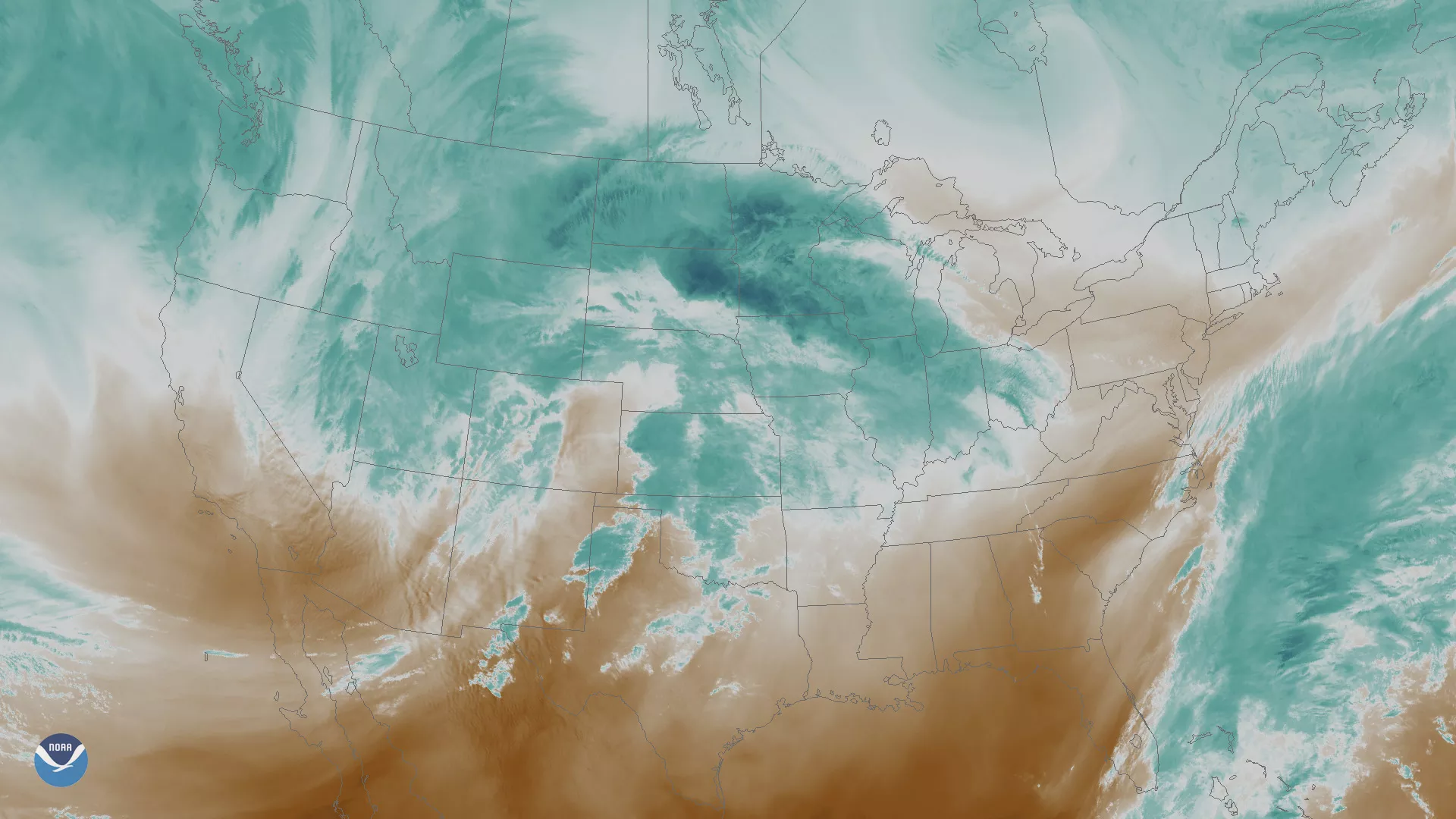What is Snow?
Snow is precipitation in the form of ice crystals. It originates in clouds when temperatures are below the freezing point (0 degrees Celsius, or 32 degrees Fahrenheit), when water vapor in the atmosphere condenses directly into ice without going through the liquid stage. Once an ice crystal has formed, it absorbs and freezes additional water vapor from the surrounding air, growing into a snow crystal or snow pellet, which then falls to Earth.
Scientists study ways to map global snow cover as well as ice from satellite and ways to determine the contribution of melting snow to regional water supplies.

A view of snow and ice in the Arctic.
Common Phenomena
It is simply frozen ocean water. It forms, grows, and melts in the ocean. Sea ice occurs in both the Arctic and Antarctic. Sea ice has a bright surface, so much of the sunlight that strikes it is reflected back into space.
Investigate SEA Ice
This occurs when cold air moves across the open waters of the Great Lakes. As the cold air passes over the unfrozen and relatively warm waters of the Great Lakes, warmth and moisture are transferred into the lowest portion of the atmosphere. The air rises, clouds form and grow into a narrow band that produces 2 to 3 inches of snow per hour or more.
The Lake Effect
A nor’easter is a storm along the East Coast of North America, so called because the winds over the coastal area are typically from the northeast. During winter, the polar jet stream transports cold Arctic air southward. The difference in temperature between the warm air over the water and cold Arctic air over the land is the fuel that feeds Nor’easters.
What is a Nor'easter?
Snowflakes form when water vapor travels through the air and condenses on a particle. Snow is not simply a frozen droplet of water falling from a cloud. What makes a snowflake different is that it forms slowly, and that it grows in the cloud. Snow cover extent in the U.S. and the rest of the Northern Hemisphere is mapped from satellite observations.
What is snow really?
This term can encompass blizzards, blowing snow, squalls, or snow showers. Remote sensing, combined with in-situ measurements, can either make direct observations or create models on pack accumulation, heat exchange at the air-snow interface, areal extent of snow cover, heat storage within the snow pack, liquid water retention, and transmission and heat exchange at the ground-snow interface.
Blizzards, Squalls & More
More Articles on Ice and Snow
-
NOAA’s JPSS polar-orbiting satellites, NOAA-20, NOAA-21, Suomi-NPP, watched iceberg A23a spend the…
-
For the second consecutive year, ice cover on the Great Lakes remains significantly below average…
-
The Storm of the Century: A Look Back from NOAA Satellites




